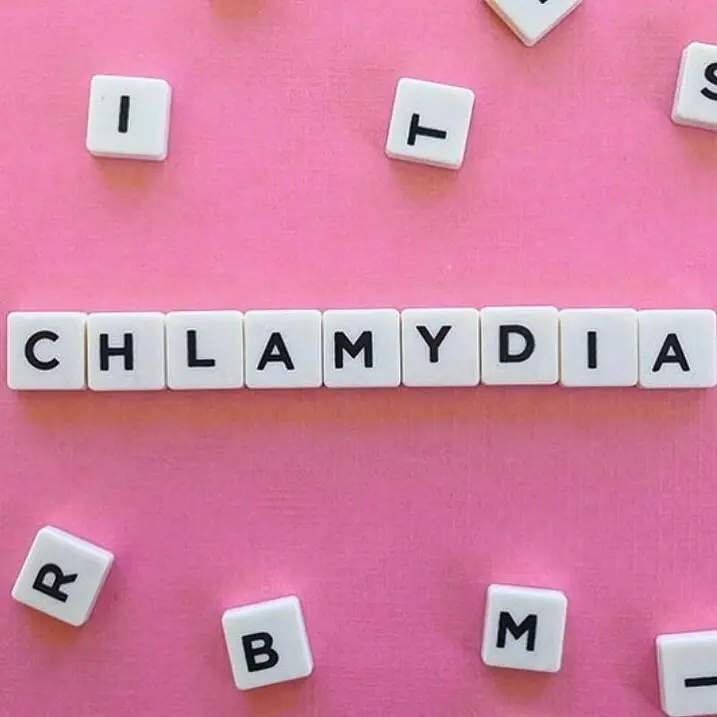Content :
Ⅰ. Introduction
Chlamydia trachomatis is the bacterium responsible for a sexually transmitted infection (STI) called chlamydia. It is one of the most common STIs, two-thirds of new Chlamydia infections occur among young people aged 15-24 and estimates show that one in 20 sexually active young women aged 14-24 has chlamydia.
Chlamydia often has no symptoms, but it can cause serious health problems. If symptoms do appear, they may not appear until several weeks after infection from sexual contact or sharing of sex toys.
It affects the mucous membranes of the body in both men and women: genital tract, throat (pharynx), anus and rectum. Chlamydia can also infect the eyes through contact with infected discharge.

Ⅱ. How do you catch chlamydia ?
Chlamydia, like other STIs, is passed from an infected person to a partner through certain sexual activities:
- You can get chlamydia by having anal, oral, or vaginal sex with someone who has it. Also, you can still get chlamydia even if your sexual partner doesn't ejaculate.
- If the vagina, cervix, anus, penis or mouth come in contact with infected secretions or fluids, transmission is possible.
- Pregnant women can transmit chlamydia to their babies during childbirth. It can cause ophthalmia neonatal (conjunctivitis) or pneumonia in some infants.
- A woman who has not had anal sex can get chlamydia in the anus or rectum if bacteria spreads from the vaginal area, like when she wipes herself with toilet paper.
- Chlamydia can also be transmitted by sharing sex toys (unwashed or unprotected with a condom each time).
Note: Chlamydia cannot be transmitted through casual contact, such as kisses and hugs, or by sharing baths, towels, pools, toilet seats, or cutlery.
Ⅲ. What are the symptoms of chlamydia ?
About 75% of women and 50% of men have no symptoms, and the symptoms of chlamydia resemble those of gonorrhea and the two infections are often confused. If a person has symptoms, they usually develop within 1-3 weeks of exposure to chlamydia.
What are the symptoms of chlamydia in women?
- An unusual, strong-smelling discharge from your vagina.
- Discomfort when urinating and having sex.
- Irritation or itching around your genitals.
- If the infection spreads to the fallopian tubes, women may experience pain in the lower abdomen and lower back, pain during intercourse, bleeding between periods, nausea or fever.
What are the symptoms of chlamydia in men?
- A discharge from your penis
- Burning when you urinate.
- Burning or itching around the opening of your penis.
- Pain or swelling in the testicle
Men and women can also get chlamydia in their rectum. This happens either by having receptive anal sex or by spreading from another infected site
- Rectal pain;
- Discharge
- Bleeding
Ⅳ. How do I know if I have chlamydia trachomatis ?
Your doctor may use different tests to diagnose chlamydia. They will probably use a swab to take a sample, either from the urethra in men or from the cervix in women. C. trachomatis urethral infection can be diagnosed by testing first void urine.
There are two main methods to detect chlamydia in collected samples: NAATs (nucleic acid amplification tests) and cell cultures. NAATs are more sensitive than cultures and can diagnose more cases.
Note: The indications for serology are limited to upper genital infections (salpingitis, endometritis)
Ⅴ. Bacteriological characteristics
Long considered viruses, it was not until the 1960s that Chlamydia are recognized as bacteria. Chlamydia are eubacteria comprising four species, two pathogens for humans, C trachomatis and C pneumoniae, and two pathogens for animals, C psittaci (which may occasionally cause infections in humans) and C pecorum.
The culture is preferably carried out on vaginal agar (V agar) or HBT agar (Human Blood Tween) for 48 hours in anaerobic conditions.
Ⅵ. Treatment
Chlamydia can be cured with antibiotic treatment. Treatment of sexual partners can prevent reinfection and infection of other partners.
Recommended Treatment
- Doxycycline 100 mg orally twice a day for 7 days
Alternative Treatment
- Azithromycin 1 g orally as a single dose, or
- Levofloxacin 500 mg orally once daily for 7 days